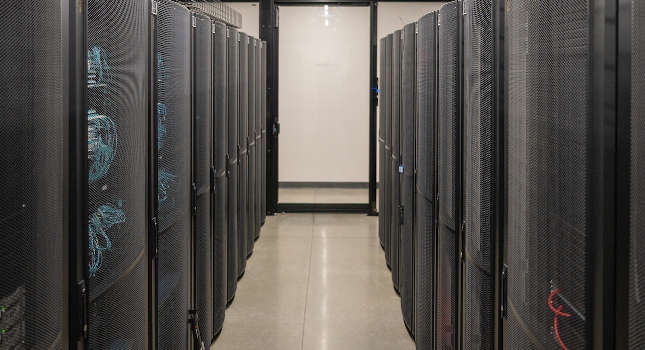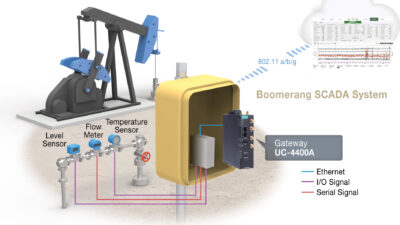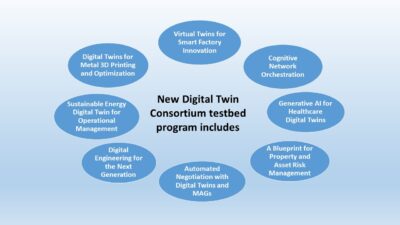Digital thread and digital twin technology can help optimize operations and fuel improvements in product design and manufacturing processes, but only if companies avoid new data silos and choose interoperability.

Learning Objectives
- A modern digital enterprise needs access to the right data, at the right time and in the right format.
- Digital thread and digital twin technologies can streamline materials and dataflow processes.
- Overall equipment effectiveness (OEE) is a frequent use case because it allows users to gather data that already exists on the plant floor.
Businesses generate more than 64 zettabytes (ZB) of data annually, according to IDC Corporate USA, as companies embrace digital transformation efforts. With more information coming from more sources across the organization, a modern digital enterprise capable of accessing the right data, at the right time and in the right format can enhance the business value derived from that data.
The term digital thread is shorthand for the cumulative effect of all data streams woven together throughout the organization. Digital thread helps optimize operations and fuel improvements in product design and manufacturing processes while lowering costs and enhancing compliance. Digital thread also is the foundation for creating digital twins, which are digital replicas of physical assets, so organizations can visualize, predict and control how processes should optimally be run.
These combined digitized capabilities are foundational for transformation success. However, they are only possible if the organization can overcome a status quo of siloed, unconnected and poorly orchestrated data.
Why companies should embrace the digital thread and digital twins
The growth of digitization increases as more companies embrace digital transformation, more employees work remotely and more corporate functions are taken online. Given the reams of data across any modern organization, the ability to access the right data at the right time, in the right format and with the correct context is now an enterprise “must have” rather than a “nice to have.”
This digital thread can be accessed and analyzed anywhere across an organization’s information technology (IT) or operational technology (OT) architecture to provide new levels of intelligence and decision support. This intelligence is actionable and can be used to identify potential issues, optimize operations and enable continuous improvements in production or supply chain settings.
Digital twins, meanwhile, provide virtual representations of as-built physical assets and all related processes to mirror an enterprise’s workflows, machinery, controls and systems.
Digital twins help strengthen operating models, revenue streams and relationships across the enterprise.
For all the benefits, creating digital threads and running digital twins is easier said than done. During planning and implementation, many organizations face the nagging challenge of complexity in trying to synchronize systems, technology and data stores or repositories that are often disparate, siloed and spread across the organization. These problems must be overcome before organizations can reap the full value of digital thread and digital twin technologies.
Addressing organizational silos, standardization
The solos and hurdles that stand in the way of implementing digital thread across the enterprise come in many forms, and refined the connection to independent experiments, leading to what is referred to as proof-of-concept purgatory. It happens when digitization efforts are splintered across the organization as a collection of limited, uncoordinated piloting efforts. Various teams pursue projects to digitize a small slice of the operation, but these experiments happen in isolation and are not aligned strategically in the organization.
The problem is a lack of strategy linked to value. Whether its product development, manufacturing, field services or some other function, an organization may have dozens of small pilot projects happening. There may be multiple concurrent efforts, but very few connect the dots to align results, refine approaches and scale implementations with a level of data standardization and availability that’s necessary to create a digital thread across the organization.
Other digital transformation efforts are flawed and top-heavy with plenty of grand strategy that try to link to big funding requirements. They may lack sufficient planning and follow-through for implementing real solutions or even staging a successful pilot. Such plans fail to factor in operational concerns and the expertise required to create digital thread and digital twin capabilities in actual systems.
Manufacturing digitalization: Choose interoperability
Organizations must take care to avoid setting up new silos and limitations that can arise from the wrong technology investments. Ideally, business should drive investment decisions, with best-of-breed flexibility for choosing vendors and tailored services that meet specific business needs for the organization. This does not always happen. Organizations risk getting locked into proprietary technologies that curtail the range of choices for modernization – relegating transformation teams to working only within specific vendor ecosystems that limit options for solutions and interoperability.
As we look at these challenges and how to solve them, it’s becoming clear that organizational silos go beyond just datasets; business processes and workforce roles can be siloed, as well. For instance, transformation efforts may be flagged as C-Suite priorities, but sustained follow-through does not always happen as execution for the project gets kicked down the organizational chart, and confusion sometimes arises about who owns the transformation effort and outcomes.
Keys to successful digital thread, digital twin implementations
None of the challenges are made easier by the “Great Resignation” and the era’s unprecedented talent shortages. Many organizations seek strategic transformation partners who can provide the right expertise and staffing to support the modernization effort. Such partners should be capable of collaborating in best-of-breed partner ecosystems, to avoid excessive reliance on limited, proprietary vendor ecosystems.
As companies identify and avoid or remove potential roadblocks, they can begin to bring data and processes together in one, cohesive digital thread that sits across an organization as a whole – providing an integrated and unified flow of data that links all processes throughout the value chain.
To the extent the enterprise overcomes its challenges and better positions itself to implement digital thread and digital twins, the next challenge is more fun, but no less critical: Where to start? While every company will have to customize its strategy and priority list to suit the unique business needs of the organization, there are some key use cases where digital thread and digital twin capabilities have been shown to be particularly valuable. The important thing is to get started with high-value, high-priority use cases and adding the ability to scale.
Digital thread can start with OEE, existing sensors
Overall equipment effectiveness (OEE) is a frequent use case for digital thread and digital transformation. That’s because production systems may already be laden with sensors, flowmeters and other IoT devices ripe for data analysis. The understanding and approach to collecting and aggregating data into useful models is well understood and technology and methods are here today to accelerate and deliver solutions and value. In addition, the future bodes well to simplify and drive out more cost as some production settings are increasingly using 5G connectivity, which accelerates speed and bandwidth of IoT systems while reducing latency and facilitating edge computing. This enhances the volume, variety and velocity of data that feeds digital thread and digital twin models of OEE.
Field services is another area where digital thread and digital twins can make a huge difference; it is a well understood and mature use case. Many products remain connected in the field, which enables original equipment manufacturers (OEMs) to compare how a product or one of its components is operating in the customer setting. Digital thread and digital twins can leverage sensor data and other telemetry to perform remote diagnostics – often in real time – to assess whether the product or component is operating in accordance with its design intent. The technology even can help guide remote maintenance and performance tuning efforts.
Digital thread, digital twin can support sustainability
Sustainability is another growing application for digital thread and digital twin. As more organizations embrace sustainability as a business priority, they’re finding such technologies can monitor and optimize energy usage and efficiency in their operations. The ability to do this and also generate reports on energy consumption helps with compliance. It also can simplify the process of redeeming carbon credits or other industry incentives for energy efficiency.
When integrated correctly, digital thread and digital twin technologies offer significant benefits that range from streamlining materials or processes data flows and evaluating product concepts during design and build stages; to enhanced operational practices around validation, inspection and calibration of systems and equipment.
Today, more organizations are learning to embrace digital thread and digital twin capabilities for modernization efforts that deliver to higher levels of productivity, value and ongoing innovation for the enterprise.
Rod Walters is principal & global practice leader – enterprise technology, Kalypso, a Rockwell Automation Business for digital transformation services. Edited by Chris Vavra, web content manager, Control Engineering, CFE Media and Technology, [email protected].
MORE ANSWERS
Keywords: digital twins, digital thread
CONSIDER THIS
How can digital thread and digital twin technologies improve your facility?



